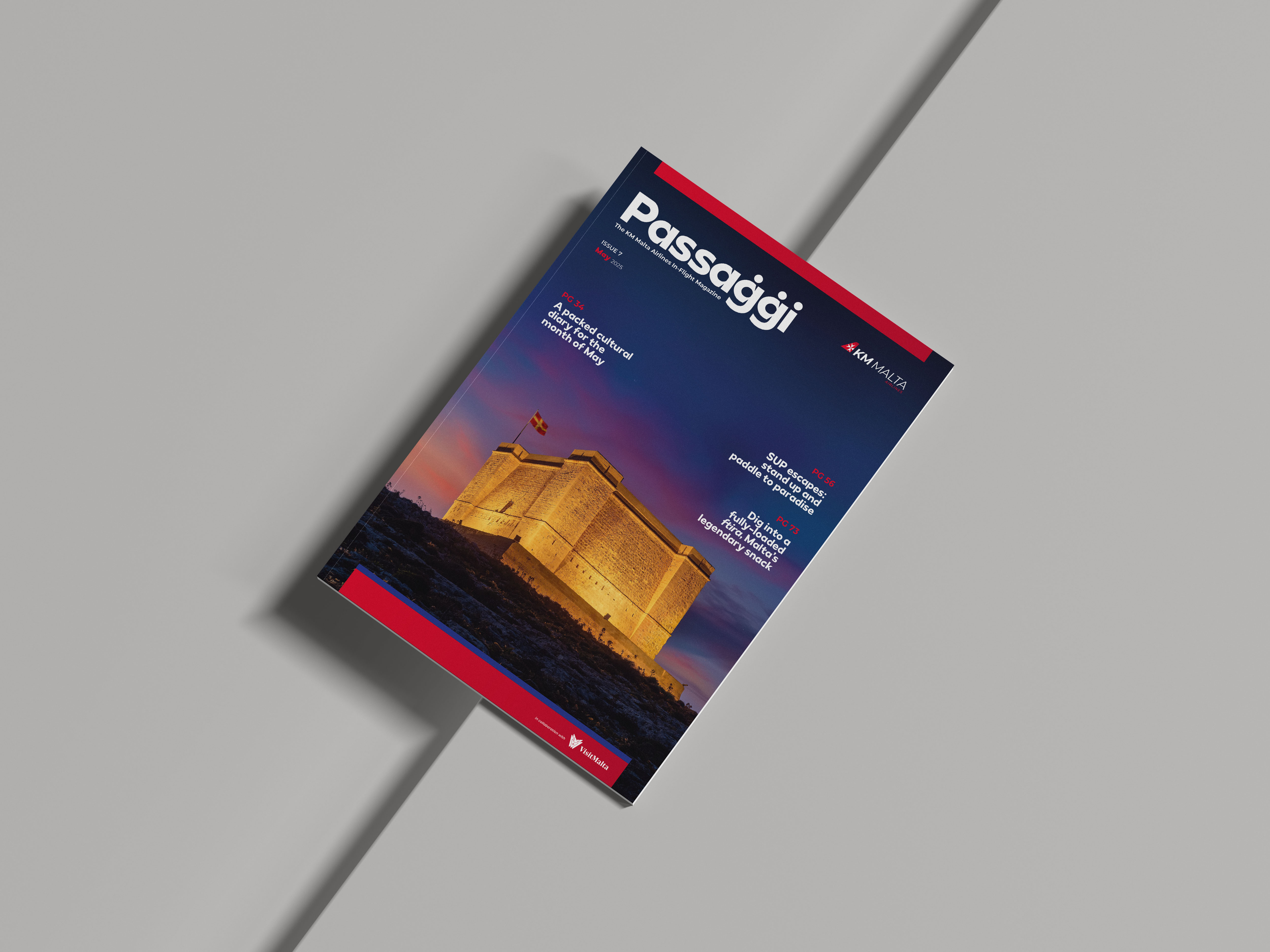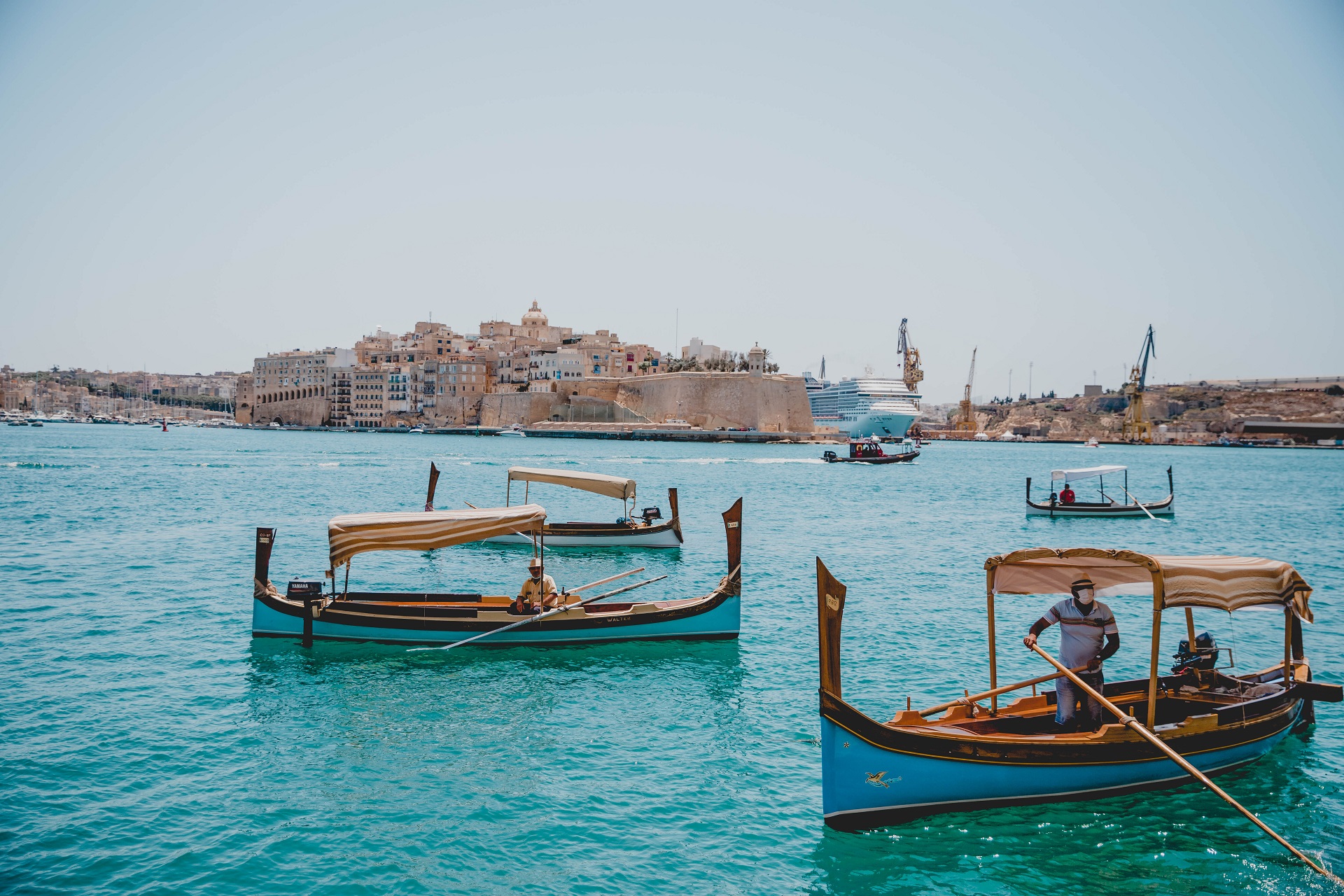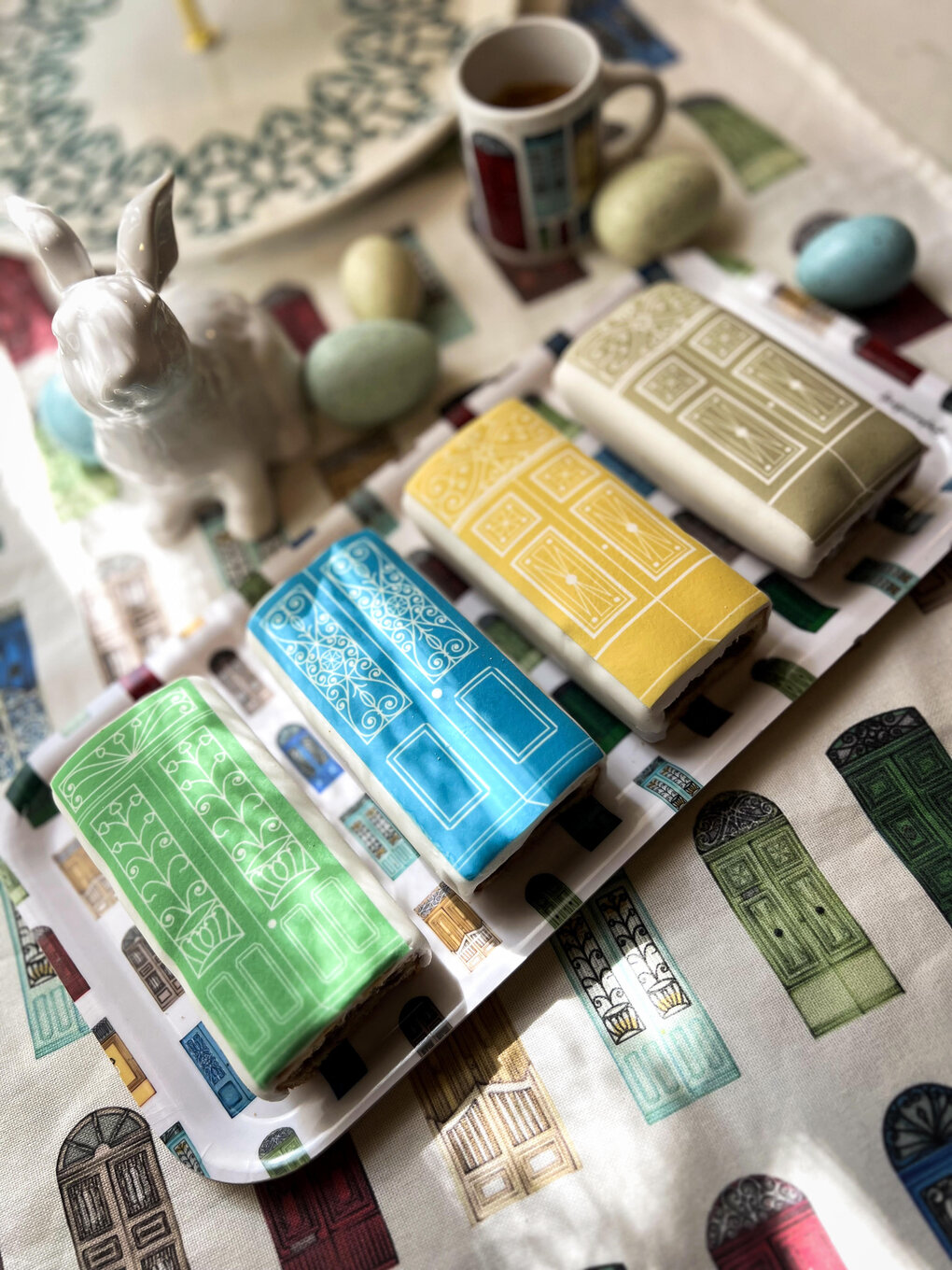
Is it even Easter in Malta without figolli?
Words by Adriana Bishop
This oversized almond-stuffed biscuit has been the de facto Easter Sunday treat long before the invasion of chocolate eggs.
As Easter approaches, the scent of freshly baked figolli fills homes across Malta, bringing together families to celebrate both tradition and creativity. This iconic Maltese almond-filled biscuit, historically crafted in the shapes of people, animals and symbols of faith, holds a special place in the hearts of the Maltese. For chef and food stylist Manuel Aquilina, figolli are more than just a sweet treat – they’re a cherished part of his childhood memories, and now, a beautiful tradition shared with his son, Santiago.
Growing up, Manuel was the youngest of three boys, often found in the kitchen with his mother, a passionate cook who spent hours preparing family meals. "I would be with her, making figolli and decorating them," Manuel recalls. This process was an exciting and memorable experience; one that he now shares with his own adpoted son, adding to a legacy that spans generations. Manuel’s recipe blends traditional methods, passed down from his mother, with his own modern touches. The result? A figolla that’s rich, moist and fragrant with orange and lemon zest. “The pastry should be soft and buttery,” he explains, “with textures of vanilla and orange zest. A good figolla has you coming back for more and I believe my recipe does just that.” But it’s the decoration that sets Manuel’s creations apart. Rather than sticking to the typical shapes like hearts, fish or lambs, Manuel elevates the art of figolla decoration by incorporating elements of Maltese culture. He crafts intricate designs inspired by the luzzu (traditional Maltese boat), the Knights of St John, door knockers, the Maltese festa, the Selmun Red Tower, and even the ornate details of Maltese tiles. His figolli are a vibrant celebration of everything Maltese, merging food, culture and art in one delicious creation.
“You need to dedicate a lot of time and patience to create these designs, but the satisfaction of the end result is extremely rewarding,” says Manuel. For many, the heart of the figolla lies in its symbolism. In her book, The Food and Cookery of Malta and Gozo, Helen Caruana Galizia explains that traditional shapes represent different aspects of life and faith. The shapes of men, women, fish (a symbol of God), the basket (a symbol of plenty, or fertility) and the lamb were once common, with the egg placed in the centre of a figure representing fertility and rebirth.
"As children, we used to be intrigued by the egg right in the middle of the man or woman’s tummy," Helen writes. It used to be a real, hard-boiled egg, painted with vegetable colouring, before chocolate eggs became a thing. But where did this delicious tradition come from? The earliest mention of figolli was documented in 1660 – a testament to the pastry’s long-standing presence in Maltese culture. They most likely gained popularity after sugar overtook honey as a sweet treat and became a staple ingredient of Maltese recipes.
Figolli have ancient origins in Sicily, where almond pastries remain ubiquitous in every café, and Malta’s connection to the Italian island’s cultural history is well documented. The name itself is said to derive from the Sicilian word figulina, which means shape. Food was always linked to religious beliefs, which would dictate what what could be eaten and when, especially during the 40 days of Lent, when people were not allowed to have any food derived from animals. So sweet desserts such as figolli were an even more appreciated and highly anticipated reward after weeks of fasting and penitence.
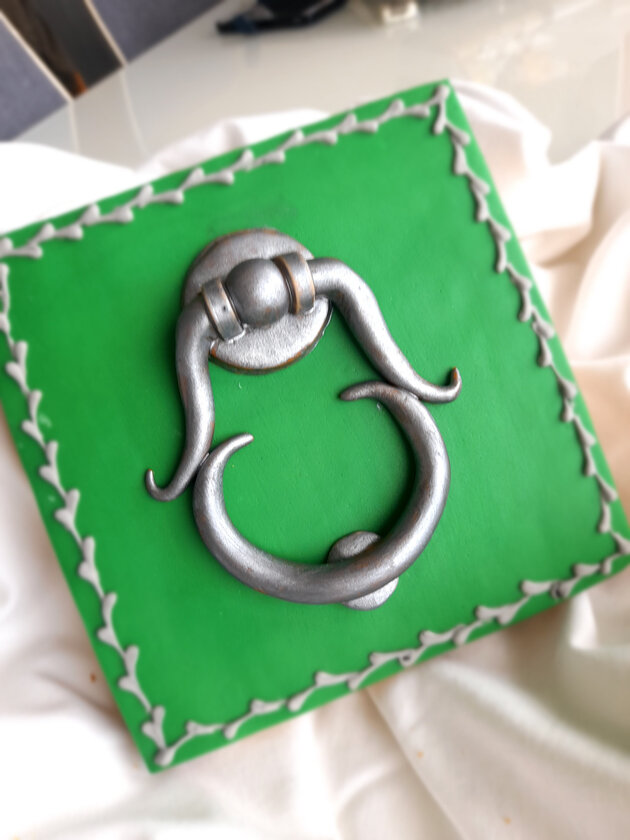
Almonds play a significant role in Malta’s culinary history. While not indigenous to the islands, the sweet almond tree still grows today, albeit not so abundantly. Almonds have been embraced in Maltese cuisine since ancient times. And it’s this very almond that gives figolli their rich flavour and texture. While the almond-based recipe remains the perennial favourite and undisputed original, some chefs are beginning to experiment with other varieties, including pistachio and even peanut butter filling encased in a chocolate pastry. It is also possible to make a gluten-free version. Manuel himself has experimented with a date and orange filling, which is lactose, nut and dairy free, as well as a moreish chocolate and hazelnut filling.
Award-winning designer Stephanie Borg is also adding a new twist to the traditional figolla this Easter, reimagining it as a mini Maltese door, a symbol of welcome, connection and the heart of Maltese life. Already iconic in their own right, with their bright primary colours and brass knockers, Maltese doors are like “human portraits” of traditional local architecture, as Stephanie herself describes them. Better known for her colourful paintings, silk scarves and other homeware, all featuring Malta-inspired colours and designs, Stephanie first created her own interpretation of the figolla in 2018 in the form of a colourful Maltese floor tile. Her latest reincarnation, produced in collaboration with the catering company Busy Bee, and made of Avola almonds, is even more special because of the symbolism behind it. “A figolla is not a keepsake; it is a treat meant to be enjoyed and passed around. Shaping it into a door makes it even more symbolic. As it travels to different homes, it carries a message of hospitality, togetherness and tradition. For me, it’s all about bringing Maltese culture to the Easter tablescape,” Stephanie explains.
So, the next time you find yourself savouring a bite of figolla, know that you’re enjoying a piece of Malta’s rich cultural tapestry, woven together with generations of tradition, creativity and love.
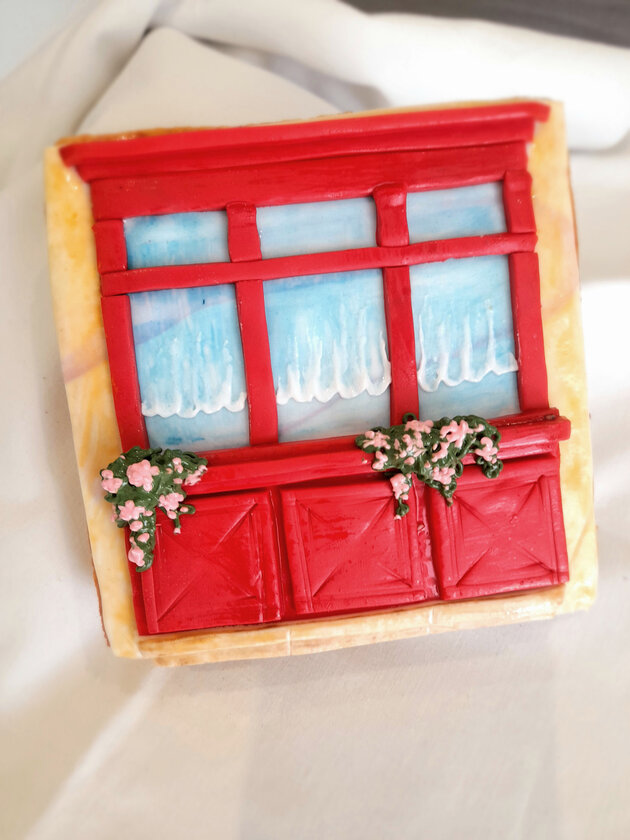
DID YOU KNOW?
It seems that the earliest visual representation of figolli in Malta is a painting by Pasquale Leonetti in 1762, part of a sumptuous mural that adorns the refectory of Casa della Madonna di Manresa in Floriana, better known as the Archbishop’s Curia. The refectory is considered a jewel of mural art, depicting biblical episodes with food displayed in the bottom sections of each painting. In Leonetti’s work, the figolla is ring-shaped and decorated with pretty sugared icing and eggs.
The Gozitan linguist and historian Giovanni Agius de Soldanis, writing at around the same time, describes the fegkulla as a dough figure baked in the shape of a male or a female holding an egg, which indicates that the pastry was already being prepared in different shapes.
How to make Manuel's traditional Maltese figolla
Makes 3 large or 7 small figolli
INGREDIENTS
For the pastry
1kg plain flour
2 heaped tsp baking powder
450g chilled butter, diced
300g icing sugar
6 egg yolks
2 tsp vanilla extract
Zest of 2 lemons and 2 oranges
Juice of 2 oranges
For the filling
850g pure ground almonds
650g icing sugar
6 egg whites
2 tsp vanilla extract
Finely grated zest of 3 lemons
100g chopped almonds or pistachios (optional)
For the royal icing
500g icing sugar
2 egg whites
Juice of half a lemon
METHOD
Start by making the pastry, preparing it in two batches of 500g each. Place the flour, butter, baking powder, icing sugar and zests into the bowl of a food processor and blitz to a crumb. Add the orange juice, vanilla and egg yolks and blitz to a soft pastry. Chill for 15 minutes.
Meanwhile, make the almond filling by blitzing together the ground almonds, icing sugar, egg whites, vanilla and lemon zest to a paste. Stir in the chopped nuts if using. Roll out the pastry and, using metal figolli shapes (or giant cookie cutters), cut out two shapes for each figolla – a top and a bottom. Spread a fairly thick layer of almond filling on one of the pastry shapes, leaving an edge free for sealing. Moisten the edge with water, then press the second pastry cut-out on top and seal all the edges.
Bake in a pre-heated oven at 180°C for 35-40 minutes depending on their size. Place them on a rack to cool. Once completely cold, decorate them with coloured icing, piped royal icing or simply with melted chocolate. Don’t forget to press a chocolate egg into the centre.
